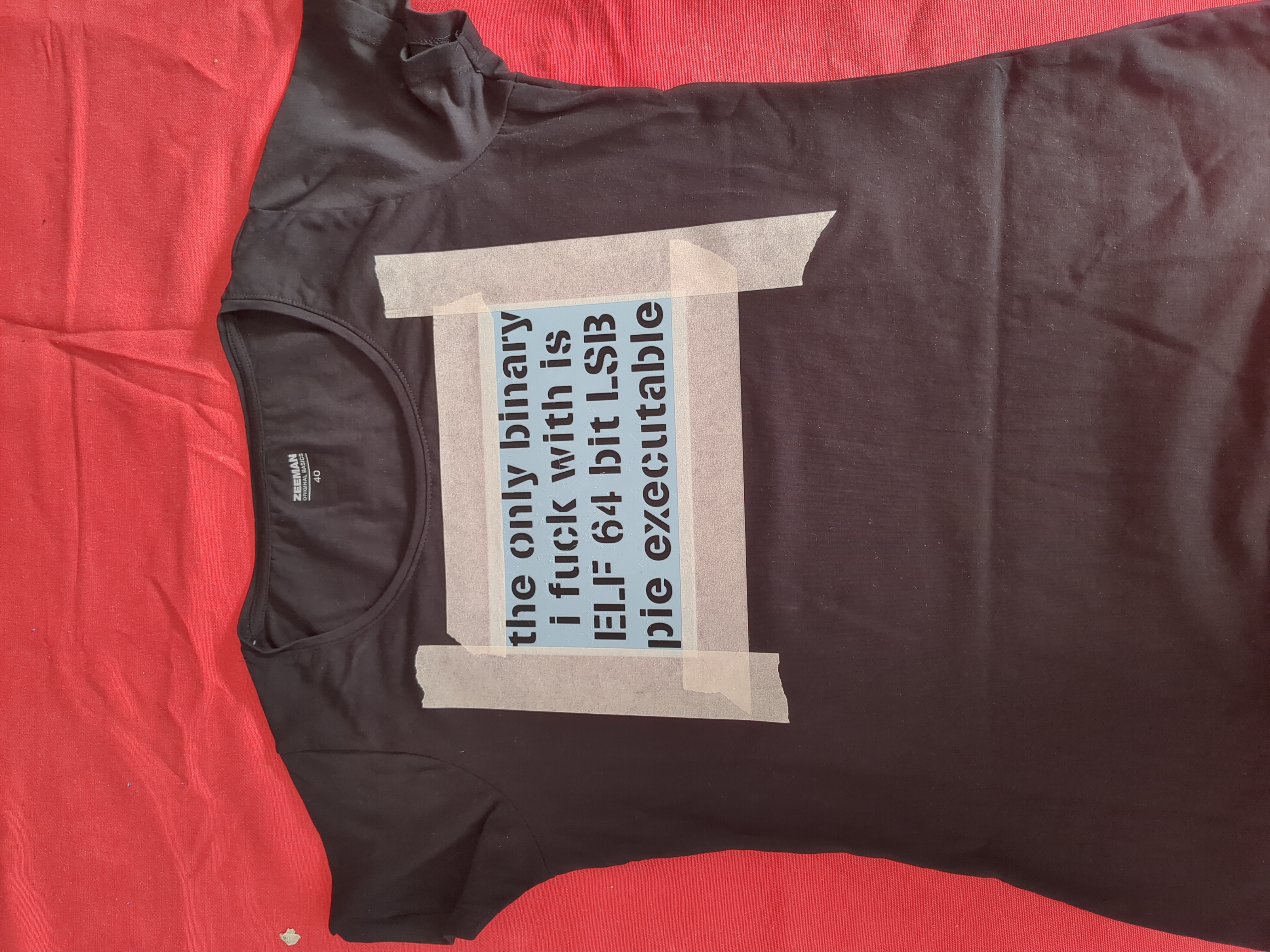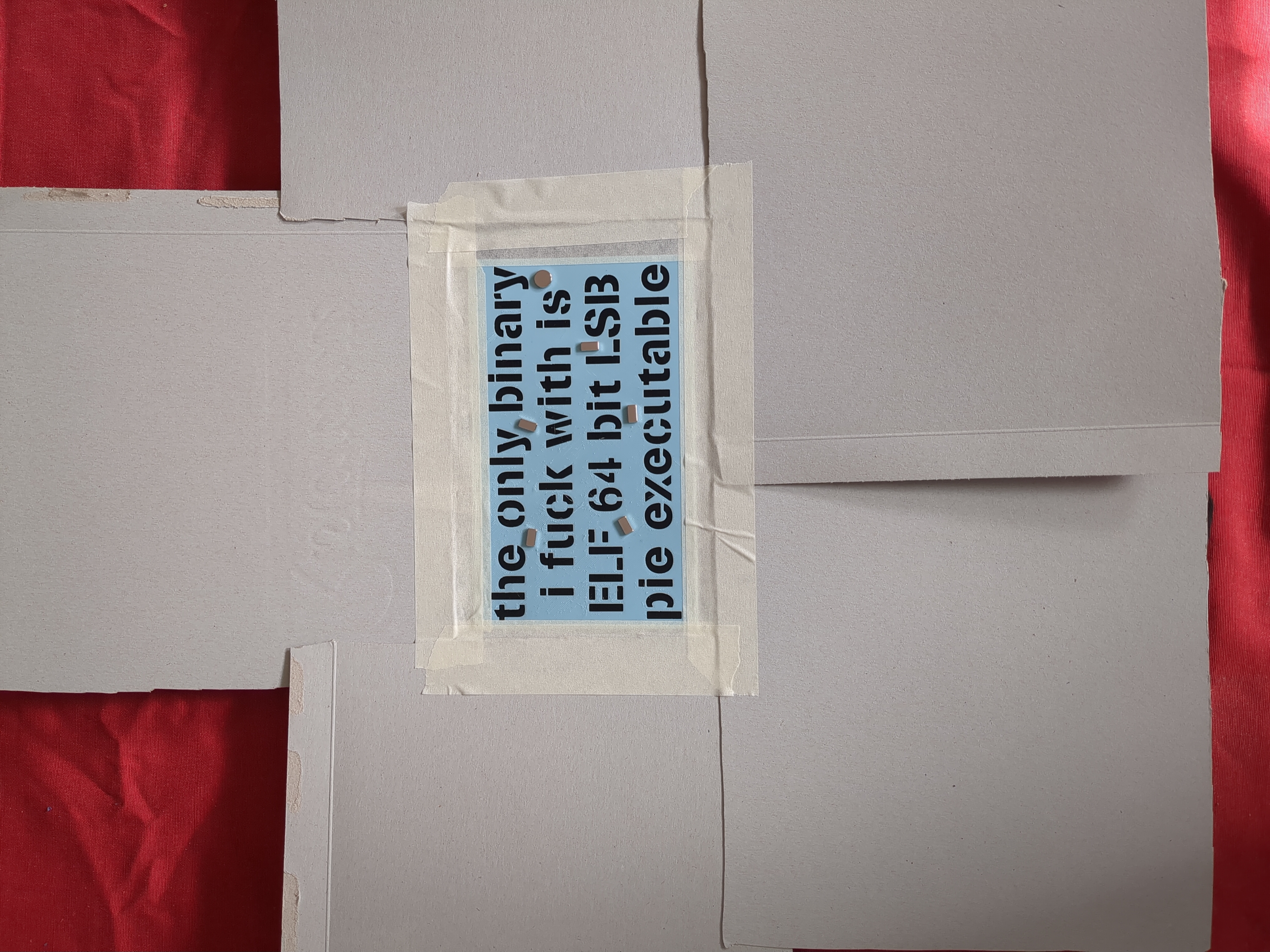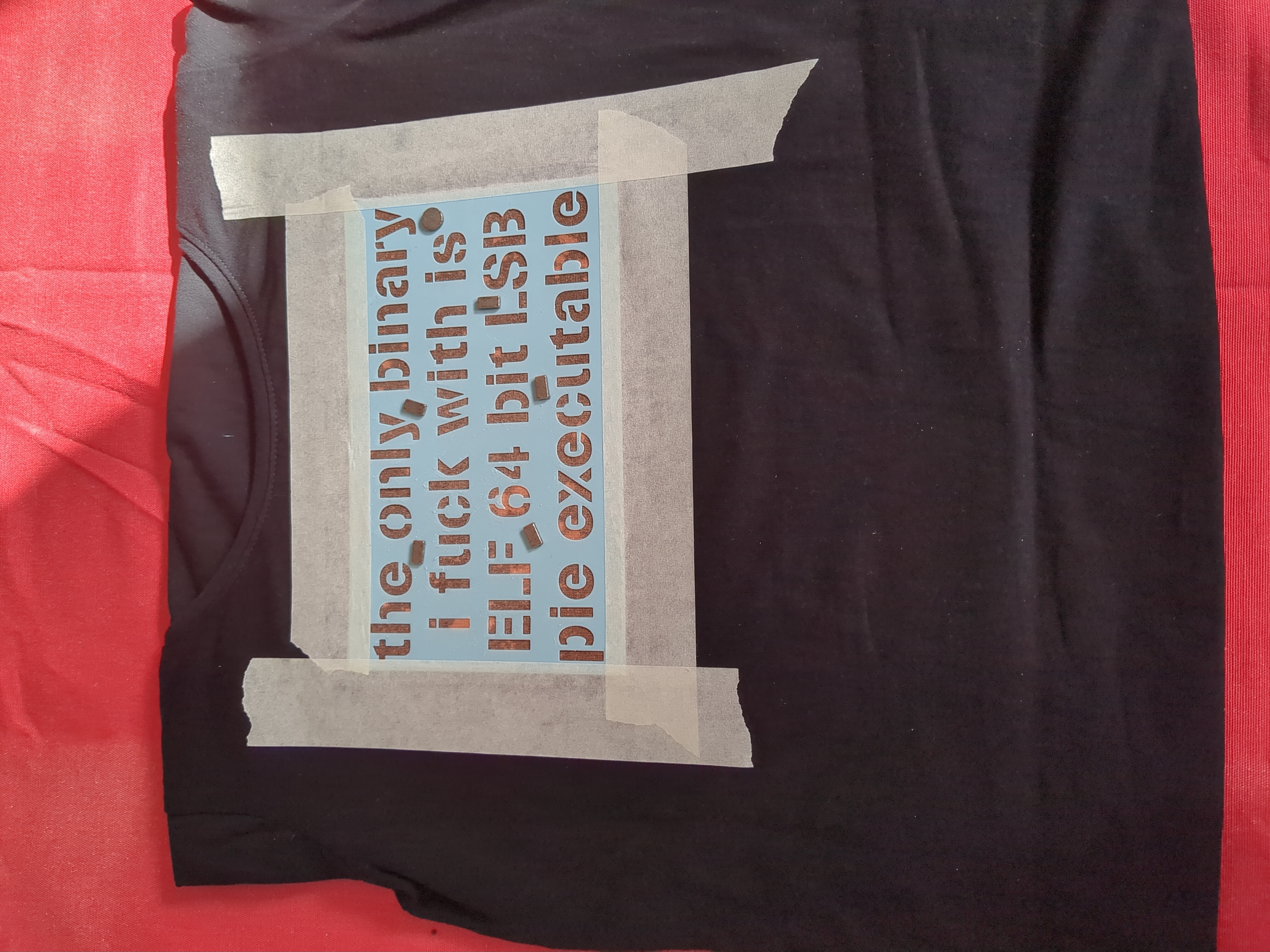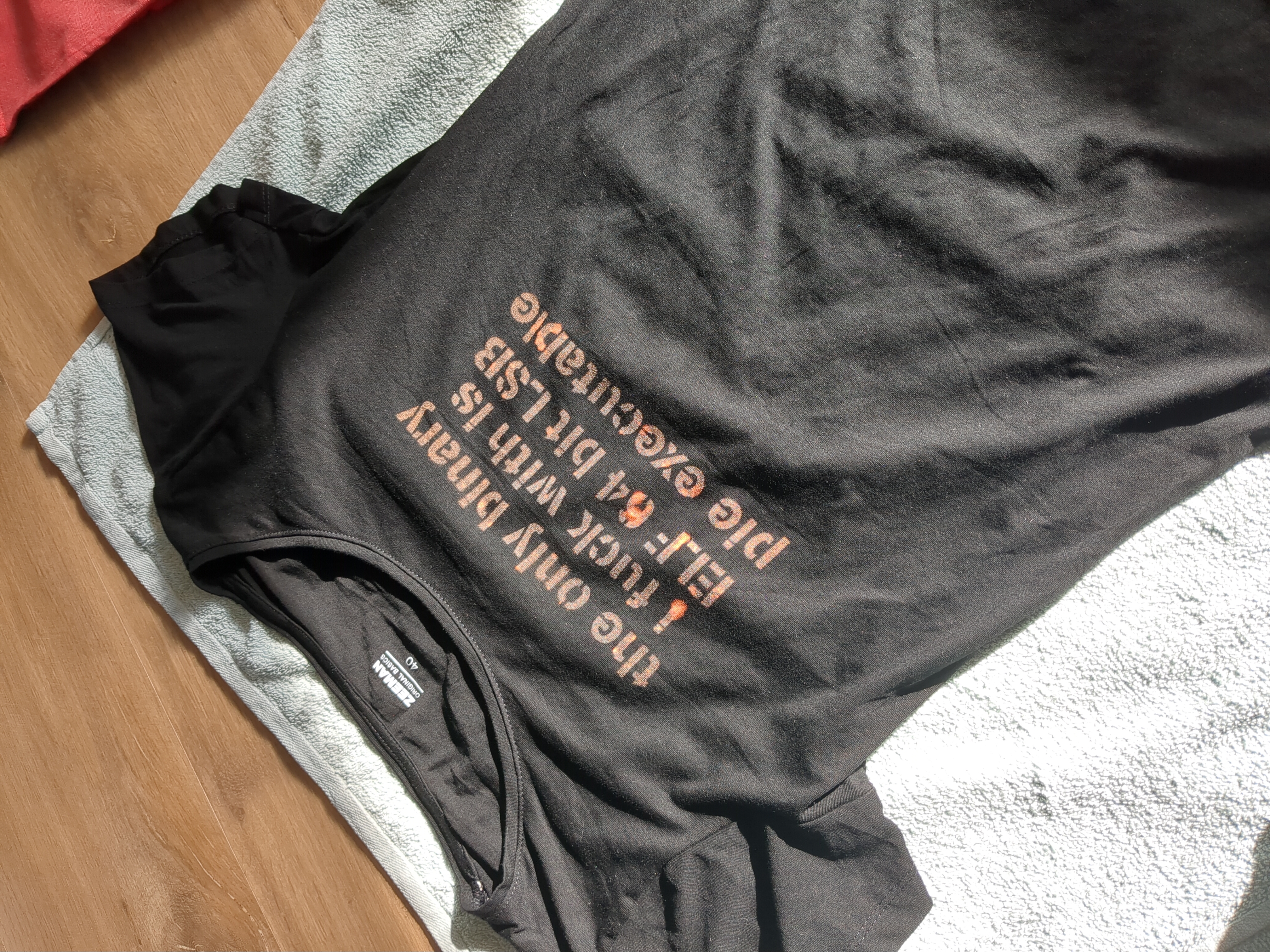The bleach and the tshirt are obvious. But this is a full list of what I use.
- Bleach (without thickening agent)
- Spray bottle
- Cotton t-shirt
- Stencil
- Masking tape
- Cardboard
- Magnets
I’ve tried bleach with and without thickening agent. The photos in this post show with. The thickening agent prevents the spray bottle from forming a nice thin mist and you’ll notice two splotches on the end result. In Dutch, you can search for bleekwater or bleekloog. Not all supermarkets carry it. This you can use without diluting.
The shirt has to be at least a big part cotton, or the bleach will not get the desired result.
You can use ribbed cardboard, but I’ve found the cardboard of frozen pizzas to work better, as the thinner stack will allow the magnets to have a stronger force.
The rest of the owl
I print my stencils on a 3d printer. I use two layers and a thickness of 0.3 mm. This results in a nice reusable end product. Using this method means you have to put a little extra effort into keeping the stencil flat on the tshirt, hence the magnets. If the stencil were to lift, your edges are not going to be sharp.
All right. The first step is prepping the shirt. Put some cardboard inside it so any bleach won’t leak onto the back fabric. Then tape the stencil to where you want the design.

Then add the magnets to keep the stencil flush with the fabric and add some more cardboard to keep the bleach from touching any other parts of the shirt.

Now you’re good to start spraying! Don’t forget to open doors and windows. If you want to get an even and sharp result, it is important to use a very fine mist, and to keep droplets from building up anywhere. You want the bleach to get onto the fabric, but you don’t want it to start seeping under the stencil. So give it a spray or two and then get any built up drops with a rag that will develop cool patterns. I got the sharpest results by letting it dry in the sun for a bit before continuing to the next round, but these aren’t very scientific observations.
Slowly you will see the fabric changing colour.

Most dyes will approach white, but black shirts go through a gold colour first. If you’re more creative than me you can also experiment with spraying parts more often than others, to get different colours. Rinse the shirt immediately when you achieve the desired result, so the bleach will stop working.
Then give it a hand wash, and ta-daa!
